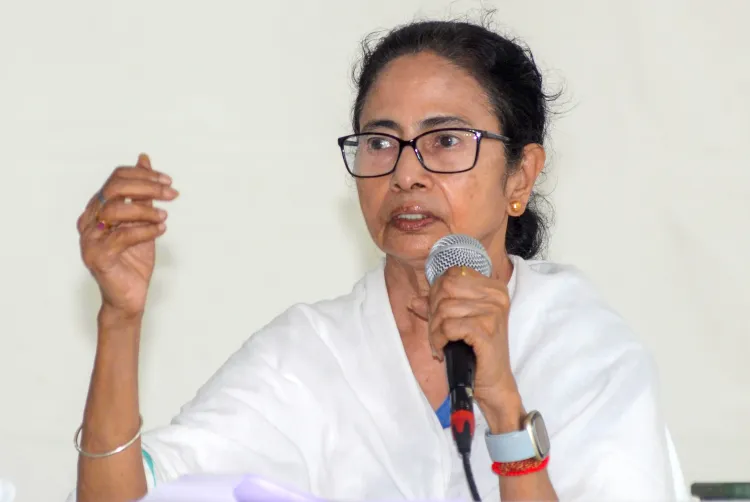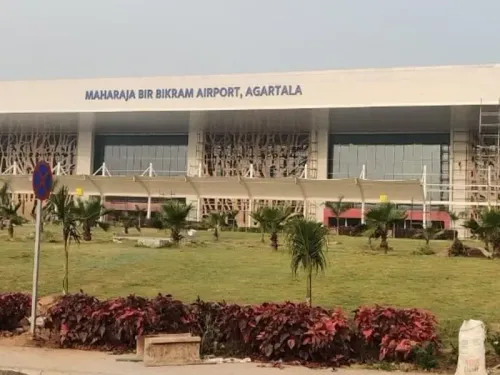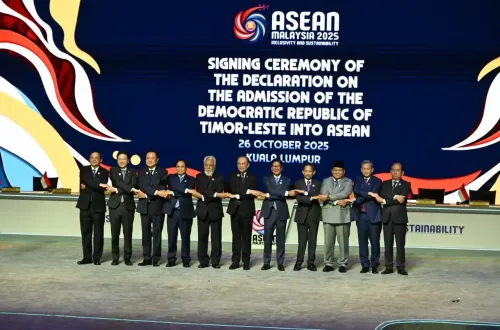Why is the Mamata Government Struggling with the Bengal DA Crisis?

Synopsis
Key Takeaways
- West Bengal's DA rate is significantly lower compared to other states.
- The government missed a Supreme Court deadline for DA payments.
- Lack of data clarity is a major issue.
- The West Bengal government is seeking an extension for payment.
- Confusion exists over the total financial liability.
Kolkata, July 6 (NationPress) The West Bengal administration has missed the Supreme Court's deadline to disburse 25 percent of the Dearness Allowance (DA) arrears to state government employees, which was due by midnight on June 27. Economists and insiders point to fundamental issues arising from a deficiency in the data necessary for accurately calculating the dues and payouts from the state exchequer.
According to experts, the primary issue is the ongoing confusion regarding the formula used to calculate the DA rates for state government workers, relevant to both the previous 5th Pay Commission and the current recommendations of the 6th Pay Commission.
If the state had utilized the All India Consumer Price Index (AICPI) as a standard for calculating DA for its employees, this issue of ambiguity could have been resolved long ago, economists argue.
The AICPI is employed as the standard for DA calculations by the central government and several other state governments. It is widely recognized as the national benchmark for this purpose.
However, the West Bengal government has refrained from accepting AICPI as the reference point for establishing the Dearness Allowance for its workforce. This refusal has perpetuated the confusion and lack of data-oriented discussions, ultimately leading to disputes between the administration and its employees.
Currently, state employees are receiving a DA rate of merely 18 percent, compared to the 55 percent granted to their peers in the central government and across various other states.
With the Supreme Court's deadline for the payment of 25 percent DA arrears now past, the West Bengal government has sought an extension of six months from the apex court to fulfill this obligation.
Another major concern is the unclear number of state government beneficiaries entitled to this Supreme Court directive, as well as the breakdown of beneficiaries by category.
This lack of clarity extends to the financial implications for the state exchequer regarding payouts for each category, and consequently, the total disbursement across all categories.
Confusion is already evident concerning the financial pressure on the state exchequer to meet the 25 percent DA arrears as mandated by the Supreme Court.
While one faction within the finance department estimates the payout to exceed Rs 10,000 crore, another faction suggests it will be slightly under Rs 12,000 crore.
Economists emphasize that better clarity in the data concerning these two aspects could have avoided this confusion.
Moreover, the West Bengal government's secretive handling of the actual calculations has contributed to this lack of transparency and data-driven dialogue. For an extended period, the government did not release the recommendations from the 6th Pay Commission, only making them public following a directive from a Calcutta High Court judge. Justice Amrita Sinha remarked that since Pay Commission documents are not classified, the government's secrecy was unwarranted.
As for the cabinet members, including Chief Minister Mamata Banerjee, they have maintained a notable silence on the issue. The Chief Minister has merely stated that the state will act in accordance with the law.









